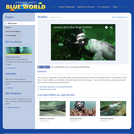
This resource is a video abstract of a research paper created by Research Square on behalf of its authors. It provides a synopsis that's easy to understand, and can be used to introduce the topics it covers to students, researchers, and the general public. The video's transcript is also provided in full, with a portion provided below for preview:
"The clownfish–anemone relationship is a well-known and charismatic example of mutualism. Clownfish excrete nutrients that feed anemones’ symbiotic algae. While anemones’ stinging cells protect clownfish from predators. How clownfish protect themselves from getting stung is unclear, but “chemical camouflage” of the fish’s skin mucus is thought to play a role, possibly through changes in the mucus microbiome. A recent metataxonomics study investigated whether clownfish and anemones can change each other’s surface microbiomes with or without physical contact. The researchers found that the microbiomes of paired clownfish and anemones began to converge, becoming more similar with time, even when the animals were not in direct contact. The microbiome convergence persisted for two weeks after the clownfish and anemone in each pair were separated, and the changes mainly involved the increase in abundance of three Flavobacteriacea bacterial strains related to Cellulophaga tyrosinoxydans..."
The rest of the transcript, along with a link to the research itself, is available on the resource itself.
- Subject:
- Biology
- Life Science
- Material Type:
- Diagram/Illustration
- Reading
- Provider:
- Research Square
- Provider Set:
- Video Bytes
- Date Added:
- 10/16/2021
